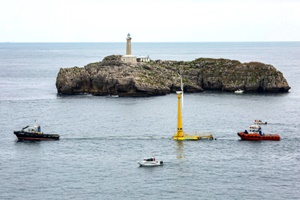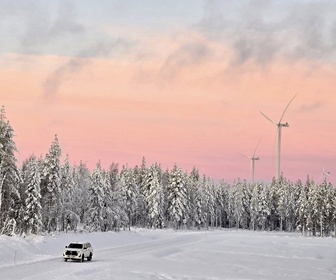 BlueSATH floating wind platform has been installed and commissioned in its final deployment site in El Abra del Sardinero (Santander, Spain). Saitec Offshore Technologies has set off towing operation from Astander’s Dock Pontejos, where it was tied up for its set-up, towards its destination 800 meters away off Cantabrian coast.
BlueSATH floating wind platform has been installed and commissioned in its final deployment site in El Abra del Sardinero (Santander, Spain). Saitec Offshore Technologies has set off towing operation from Astander’s Dock Pontejos, where it was tied up for its set-up, towards its destination 800 meters away off Cantabrian coast.Then, the already-laid mooring lines were retrieved from the seabed and the platform was hooked. Finally, commissioning offshore has been completed so the turbine is ready to operate. Testing will take place in real sea environment with the deployment of a 1:6 scaled prototype of a 10MW wind turbine using SATH floating technology, (Swinging Around Twin Hull). BlueSATH tests conclusions will be applied to the following full-scale model DemoSATH (2MW). A project that has the support of RWE Renewables and that will be installed in the Basque Platform for Marine Energies (BIMEP) in Armintza in 2021.










